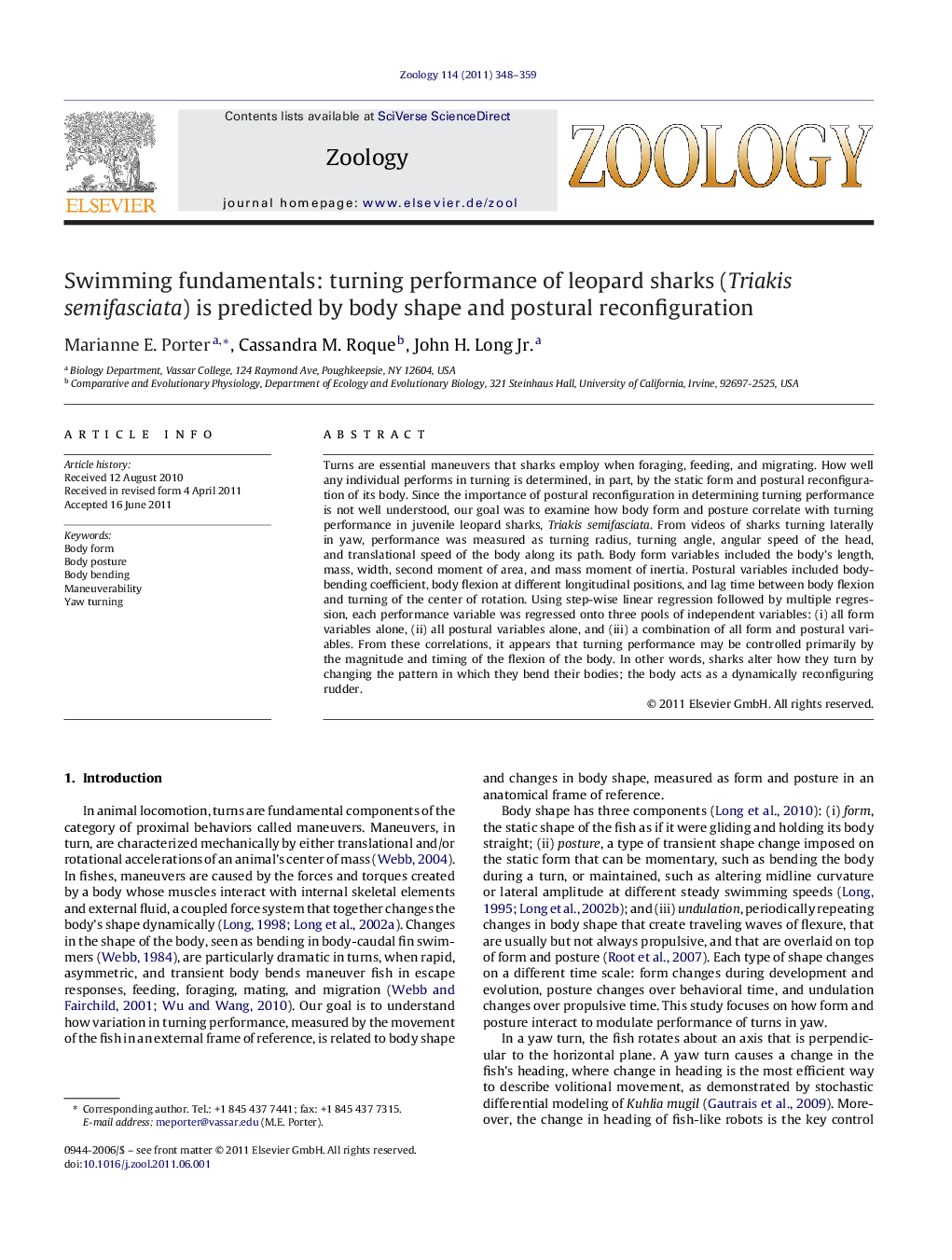| Article ID | Journal | Published Year | Pages | File Type |
|---|---|---|---|---|
| 2791230 | Zoology | 2011 | 12 Pages |
Turns are essential maneuvers that sharks employ when foraging, feeding, and migrating. How well any individual performs in turning is determined, in part, by the static form and postural reconfiguration of its body. Since the importance of postural reconfiguration in determining turning performance is not well understood, our goal was to examine how body form and posture correlate with turning performance in juvenile leopard sharks, Triakis semifasciata. From videos of sharks turning laterally in yaw, performance was measured as turning radius, turning angle, angular speed of the head, and translational speed of the body along its path. Body form variables included the body's length, mass, width, second moment of area, and mass moment of inertia. Postural variables included body-bending coefficient, body flexion at different longitudinal positions, and lag time between body flexion and turning of the center of rotation. Using step-wise linear regression followed by multiple regression, each performance variable was regressed onto three pools of independent variables: (i) all form variables alone, (ii) all postural variables alone, and (iii) a combination of all form and postural variables. From these correlations, it appears that turning performance may be controlled primarily by the magnitude and timing of the flexion of the body. In other words, sharks alter how they turn by changing the pattern in which they bend their bodies; the body acts as a dynamically reconfiguring rudder.
